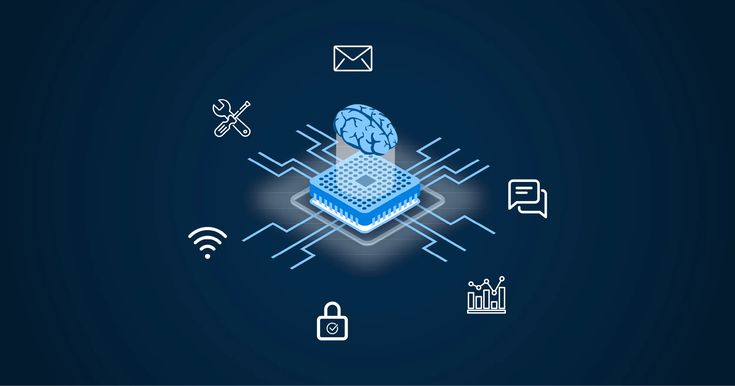Embedded systems are the backbone of modern technology, powering everything from smartphones and smart appliances to medical devices and autonomous vehicles. As the demand for these systems grows, so does the need for skilled professionals who can design, develop, and troubleshoot embedded technologies. If you’re looking to build a career in this exciting field, taking the right course is essential. This guide will help you navigate the world of embedded systems courses and choose the one that’s best suited for your learning goals.
1. What is an Embedded System?
Before choosing a course, it’s important to understand what embedded systems are. An embedded system is a specialized computer designed to perform dedicated functions within a larger system. These systems are typically resource-constrained and optimized for specific tasks. Examples include microcontrollers in IoT devices, automotive control systems, medical equipment, and robotics.
2. Determine Your Learning Goals
Your learning objectives will influence the type of embedded systems course you should pursue:
- Embedded Software Development: If you want to focus on programming and coding embedded systems, look for courses that teach languages such as C, C++, and Assembly, as well as software development for microcontrollers and real-time operating systems (RTOS).
- Embedded Hardware Design: If you’re more interested in the hardware side, look for courses that cover digital electronics, circuit design, PCB layout, and interfacing microcontrollers with sensors and actuators.
- Internet of Things (IoT): Embedded systems are a crucial part of IoT. If you’re interested in IoT development, choose courses that focus on cloud integration, wireless communication protocols (like Bluetooth, Zigbee, Wi-Fi), and sensor networks.
- Real-Time Systems: For those interested in applications like robotics or automotive systems, real-time computing and task scheduling are key topics. Look for courses that focus on RTOS and time-sensitive applications.
3. Core Topics in a Good Embedded Systems Course
To build a solid foundation, a comprehensive embedded systems course should cover a variety of topics:
- Microcontrollers and Microprocessors: Learn the architecture and programming of microcontrollers (e.g., Arduino, Raspberry Pi, ARM-based microcontrollers).
- Embedded C/C++ Programming: Master the programming languages used to develop embedded systems, with a focus on efficiency and low-level control.
- Digital Electronics and Circuit Design: Gain knowledge of basic electronic components, digital circuits, and how to design circuits that interface with embedded systems.
- Interfacing and Communication: Understand how embedded systems communicate with sensors, actuators, and other devices using protocols such as I2C, SPI, UART, and CAN.
- Real-Time Operating Systems (RTOS): Learn how real-time systems function and how to program multitasking, interrupt handling, and scheduling.
- Embedded Software Testing and Debugging: Debugging embedded systems is challenging. Courses should include techniques and tools for testing embedded software and hardware.
4. Choose Between Self-Paced and Instructor-Led Courses
- Self-Paced: If you prefer to learn at your own pace and need flexibility, many online platforms like Coursera and Udemy offer self-paced courses. This is a great option if you are managing a busy schedule.
- Instructor-Led: If you prefer more structure and interaction, instructor-led courses might be more appropriate. Many platforms like edX and FutureLearn offer courses with scheduled lectures and assignments.
5. Hands-On Learning and Projects
Embedded systems courses are most effective when they offer practical, hands-on learning. Look for courses that provide real-world projects where you can work on designing and programming embedded systems. Building projects with platforms like Arduino or Raspberry Pi will give you practical experience that is essential in the field.
6. Certifications and Career Support
Many online courses offer certifications upon completion, which can help enhance your resume and job prospects. Look for programs that provide certification from reputable institutions or companies like ARM, TI, or Microchip. Additionally, check if the course offers career support, such as job placement assistance, resume workshops, or networking opportunities with industry professionals.
7. Balancing Cost with Value
While many courses are free or low-cost, investing in a paid course may offer more in-depth content, hands-on projects, and certifications. Consider the course cost in relation to the value it provides in terms of practical skills, resources, and career support.
Conclusion
Choosing the right embedded system course depends on your goals, interests, and career aspirations. Whether you’re aiming to become an embedded software developer, a hardware engineer, or an IoT specialist, there are courses that cater to every interest and expertise level. Focus on acquiring a solid foundation in both theory and hands-on skills, and consider supplementing your learning with real-world projects to gain the experience that will set you apart in the job market. By selecting the right course, you’ll be well on your way to mastering embedded systems and opening up a range of career opportunities in this dynamic field.

